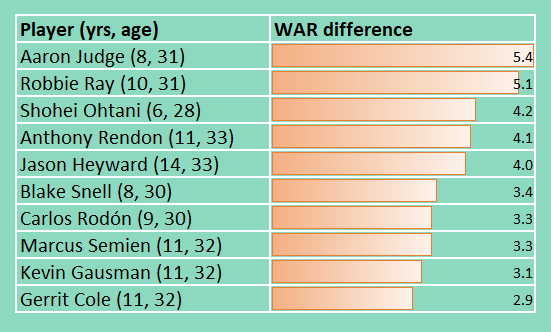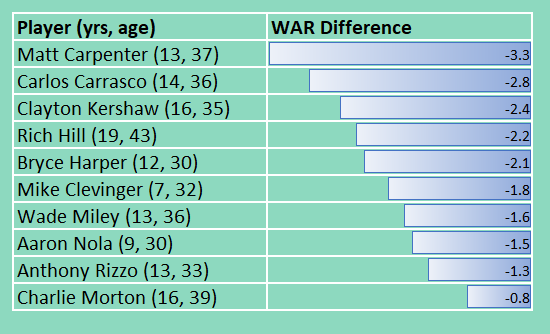Do Baseball Players Perform Better in Their Walk Years?
Photo Credit: Nick Wass/AP Photo
I recently came across an article featured by The Society for American Baseball Research (SABR), originally posted in the 2006 Baseball Research Journal, about performance in a player’s walk year, which refers to the final year of a player's contract before he becomes eligible for free agency. As stated in the article, “conventional wisdom would say they do perform better in the year before they become free agents, at least according to the stereotype of the greedy player, who will put out extra effort only when he will be rewarded financially. Traditional economic theory agrees. Like all rational economic actors, baseball players should produce more of a product when the going price rises.”
The author, however, found that baseball players do not give extra effort that results in an outperformance of their career numbers in their walk years.
Does the same conclusion hold true today? In this post, I’ll take a look at the 50 active WAR (bWAR) leaders for each of position players and pitchers to determine if SABR’s findings hold true for today’s baseball players.
Of the 100 players in my sample, only 66 had a walk year, which I define as a complete season (the 2020 shortened season and seasons with major injuries are excluded) that was followed by free agency. Seasons that lead to accepted qualified offers are also counted as walk years. If a player has had multiple walk years in his careers, only his first walk year is used for the analysis.
Walk year performance relative to career average performance, is graphed in Figure 1 below.
Figure 1: Walk Year WAR (y-axis) vs Career Season Average WAR (x-axis) for the 50 active position players and 50 active pitchers with the highest career WAR.
As evident from the graph above, Aaron Judge and Shohei Ohtani have had the best walk years in terms of overall performance.
Table 1 and Table 2 below list the players with the best and worst walk years relative to their career average performance.
Table 1: Ten active players with the best walk years relative to their career averages.
Table 2: Ten active players with the worst walk years relative to their career averages.
Judge is joined by Yankees teammates Carlos Rodon and Gerrit Cole in Table 1, which has four position players, five pitchers, and Ohtani.
Veterans Matt Carpenter, Carlos Carrasco, Clayton Kershaw, and Rich Hill are joined by Bryce Harper at the top of Table 2, which contains three position players and seven pitchers.
Conclusion
Overall, the players in my sample outperformed their career average WAR by 0.83 WAR in their walk years. A positive number was certainly expected here, given the biases of removing the shortened 2020 season from the walk year sample but not from the career averages, and not including walk years with significant injuries.
Despite those biases we can see that position players outperform their career average WAR by 1.04 WAR and pitchers by only 0.58 WAR. So although there may not be enough evidence to conclude that baseball players outperform their career averages in their walk years, the data does suggest that position players are more likely to outperform in their walk years than pitchers are.
Juan Soto, Zack Wheeler, Alex Bregman, and Pete Alonso are four walk year players that will have the spotlight in 2024, and it will be interesting to assess their performance going into free agency.



